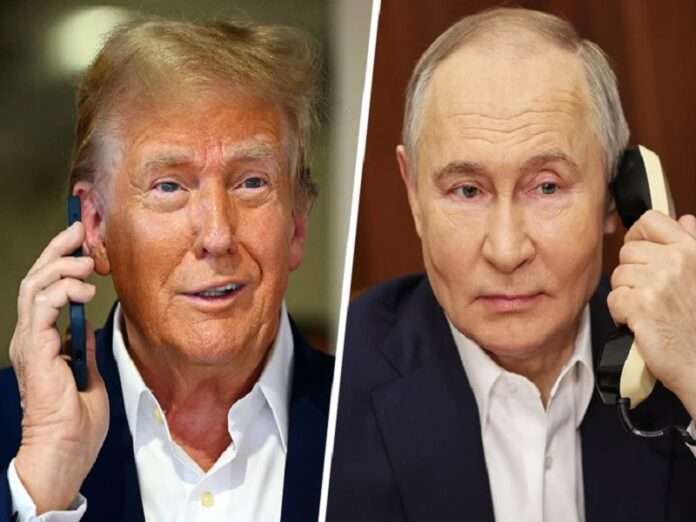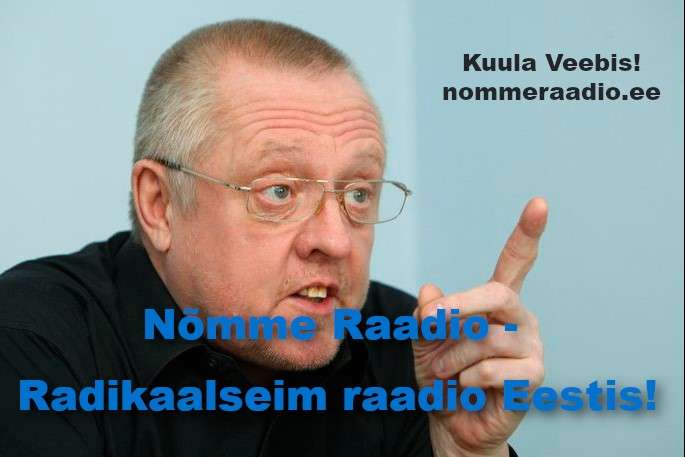12 February 2025 will go down in history as the day when the NATO-Russian proxy war in Ukraine officially began to end. Secretary of Defense Pete Hegseth started everything off by declaring that: Ukraine won’t join NATO; the US doesn’t believe that Ukraine can restore its pre-2014 borders; the US won’t deploy troops to the conflict zone; the US wants the Europeans to assume some peacekeeping responsibilities there instead; but the US won’t extend Article 5 guarantees to EU forces there.
This was followed by Trump and Putin talking for the first time since the former returned to office. They agreed to begin peace talks without delay, which was followed by Trump calling Zelensky to brief him about this and likely coerce the concessions from him that he presumably promised Putin. Trump also suggested that he’ll soon meet Putin in Saudi Arabia and that each of them might then visit each other’s countries as part of the peace process. Here are some background briefings about the larger context:
* 3 January: “Creative Energy Diplomacy Can Lay The Basis For A Grand Russian-American Deal”
* 17 January: “The Merits Of A Demilitarized ‘Trans-Dnieper’ Region Controlled By Non-Western Peacekeepers”
* 3 February: “Territorial Concessions Might Precede A Ceasefire That Leads To New Ukrainian Elections”
* 4 February: “Trump’s Interest In Ukraine’s Rare Earth Minerals Might Backfire On Zelensky”
* 7 February: “Trump’s Special Envoy Shed More Light On His Boss’ Ukrainian Peace Plan”
The first analysis about creative energy diplomacy contains a dozen proposed compromises for each side that could help move their talks along. In fact, the one about the US not extending Article 5 guarantees to EU forces in Ukraine is now policy per Hegseth, so it’s possible that some others might follow. Additionally, Trump just remarked about how unpopular Zelensky has become, which suggests that he’s planning the “phased leadership transition” via new elections that was also proposed in that piece.
It remains to be seen which of these other proposals might soon become US policy, with the same being said for the ones that Russia might implement, such as agreeing to limited military restrictions on its side of the DMZ that’ll likely be created by the end of this process for example. What follows are the five main issues that’ll shape the Russian-US peace talks on Ukraine between their leaders, diplomats, and whichever of their experts might be invited to participate in this via complementary Track II talks:
———-
* Territorial Parameters
The most immediate issue that must be resolved is where the new Russian-Ukrainian border will fall. Hegseth’s claim about Ukraine’s inability to restore its pre-2014 border hints that Trump could coerce Zelensky into withdrawing from at least all of Donbass, which is at the center of the territorial dimension of their conflict, though it’s possible that his forces might fall back as far as Zaporozhye city. Letting Russia control that city and the parts of its new regions west of the Dnieper is unlikely at this time.
That’s because Trump might not want to take the flak that would follow giving Russia a city of over 700,000 whose residents didn’t vote in September 2022’s referendum. The same goes for the parts of Russia’s new regions west of the river. Instead, he might propose a UN-supervised referendum sometime after the fighting freezes to resolve this aspect of their territorial dispute, all while allowing Russia to continue to officially lay claim to those areas. That might be pragmatic enough for Putin to agree.
* DMZ Terms & Peacekeeper Roles
The next issue to address after the above are the terms of the DMZ along their interim border and the role of the peacekeepers who’d then likely deploy there to monitor it. Hegseth’s declaration that the US will not extend Article 5 guarantees to EU forces there could deter them from playing a major role, which Russia would have to authorize via a UNSC Resolution in any case per Permanent Representative Vasily Nebenzia otherwise they’ll be legitimate targets. Non-Western ones are thus much more agreeable.
As it turns out, the vast majority of UN peacekeepers are from non-Western countries, so they could prospectively deploy there under a UNSC mandate per Nebenzia’s suggestion and possibly even result in the total exclusion of any Western peacekeepers if it’s agreed that none will contribute to this mission. Their terms would have to be acceptable to both Russia and the US in order for this resolution to pass, so it’s unclear exactly what they’ll be able to do or not do, but that directly segues into the next issue.
* Demilitarization & Denazification
Two of Russia’s main goals in the special operation are to demilitarize and denazify Ukraine, which it initially sought to do by militarily coercing Ukraine into this per the terms established in spring 2022’s draft peace treaty, though that didn’t succeed due to the UK and Poland. It’s unrealistic to imagine that Trump will agree to let Russia deploy its armed forces throughout the entirety of Ukraine to implement this so it can only be accomplished through similar diplomatic means involving Kiev’s acquiescence.
Therein lies the possible role that UN peacekeepers can play in monitoring and enforcing whatever is ultimately agreed upon for demilitarizing and denazifying Ukraine. This could take the form of inspecting suspected illegal arms sites and all of Ukraine’s cross-border traffic (including at its ports) while having the right to mandate changes to its media reporting and school curricula as need be. This is the only way to ensure that Ukraine remains demilitarized and denazified after the conflict ends.
* Sanctions Relief
Russia has repeatedly demanded the lifting of all Western sanctions, but the argument can be made that “deal-master” Trump wouldn’t ever agree to do this all at once, instead preferring to draft a plan for phased sanctions relief as a reward for Russia’s compliance with a ceasefire, armistice, or peace treaty. This could take the form of what was proposed in the creative energy diplomacy analysis whereby some Russian exports to the EU could resume during the first phase as a trust-building measure.
While Russia would prefer that they all be immediately lifted, its policymakers might conclude that it’s better to accept a phased plan if that’s all that Trump is comfortable offering instead of nothing at all. He’d do well though to engage in the goodwill gesture of lifting sanctions on Russia’s oil exports by sea too since that could convince those policymakers that he’s serious about relieving pressure on Russia. This would in turn make it easier for Putin to sell the compromise of phased sanctions relief at home.
* New Security Architecture
Russia envisaged creating a new European security architecture through mutual agreements with the US and NATO in December 2021 per the security guarantee requests that it shared with them at the time. These were in hindsight meant to diplomatically resolve their security dilemma, whose roots are in NATO’s continued eastward expansion after the Old Cold War and especially its clandestine expansion into Ukraine, in lieu of the special operation that Putin was secretly planning at the time if that failed.
So much has changed since then that separate comprehensive talks on this must start right after whatever agreement they reach on Ukraine. The new issues include NATO’s eastern military buildup, Finland and Sweden’s new memberships, Russia’s hypersonic Oreshniks, their deployment to Belarus, Russia’s deployment of nukes there too, the future of the New START that expires next year, and the new space arms race, et al. Agreeing on a new security architecture will therefore stabilize the world.
———-
As can be seen, the path ahead will be very difficult due to the sensitive issues that Russia and the US must resolve, but their leaders have shown that they have the will to negotiate in good faith. Neither side is likely to achieve their maximum objectives, but diplomacy is the art of the possible, so each will do their utmost to achieve as much as they can in this regard given the circumstances. The best-case scenario is a fair and lasting peace that truly resolves the root causes at the core of this conflict.







